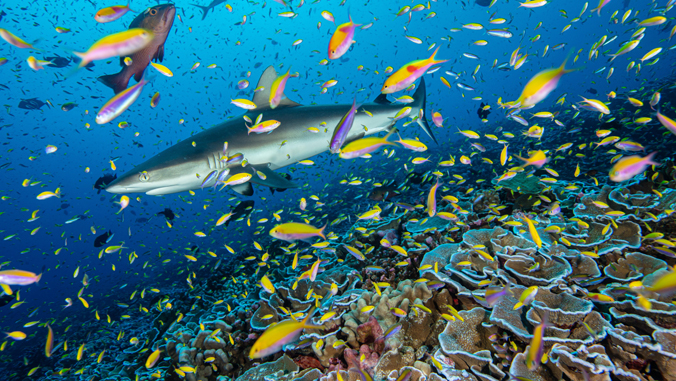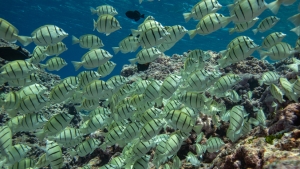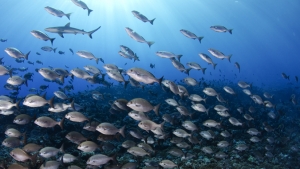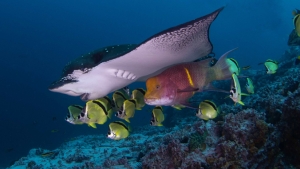
Remote ocean wilderness areas are located more than four hours from people and more than nine hours of travel distance from urban markets. A new study co-led by a University of Hawaiʻi at Mānoa expert discovered that these remote areas are sustaining fish populations up to three times better than some of the best marine reserves and managed fisheries.

Alan Friedlander, a researcher at UH Mānoa's Hawaiʻi Institute of Marine Biology and chief scientist with the National Geographic Society Pristine Seas, co-authored the study, which was published in Fish and Fisheries in late October 2021. Friedlander and researchers from the Wildlife Conservation Society, National Geographic Society and other universities, examined more than 700 remote sites, marine reserves and managed fisheries in the Pacific and Indian Oceans. They said wilderness areas shelter many important and threatened species like sharks, groupers, jacks and snappers, which require large spaces to thrive.
Experts, including Friedlander, are calling for more action, as these marine wilderness areas are rapidly disappearing in the face of widespread fishing.
"Marine wilderness areas support unique ecological values with no equivalency as one gets closer to humans, even in large and well-managed marine reserves," Friedlander said. "These areas are essential to biodiversity conservation and the spillover benefit that they can provide to fisheries."
30×30 initiative

The High Ambition Coalition for Nature and People is an intergovernmental group of 70 countries that is currently championing a global deal with the central goal of protecting at least 30% of the world's land and ocean by 2030. Similarly, a new "30×30" initiative by U.S. President Joe Biden's administration seeks to protect and conserve at least 30% of the country's land and sea by 2030. Progress toward this goal is underway, but currently less than 3% of the world's oceans are fully protected in marine reserves.
Friedlander said while the focus on 30% coverage of marine reserves is ongoing, the need to find and protect marine wilderness areas remains a high priority. The authors said that the two approaches complement each other, as marine reserves protect more resilient species while wilderness protects space-requiring species.

"Observing and surveying fishes for decades has made it clear to me that many fishes, and particularly big fishes, require lots of space to survive and thrive," Friedlander said. "This collaboration and analyses with my colleagues have made it clear how this need for open marine wilderness is essential to ocean health. This robust and extensive dataset has allowed us to confirm what many of us have observed for years, that remote marine wilderness are like time machines that allow us to observe the ocean of the past in order to protect the future."
This work is an example of UH Mānoa's goals of Building a Sustainable and Resilient Campus Environment: Within the Global Sustainability and Climate Resilience Movement (PDF) and Excellence in Research: Advancing the Research and Creative Work Enterprise (PDF), two of four goals identified in the 2015–25 Strategic Plan (PDF), updated in December 2020.
—By Marc Arakaki






